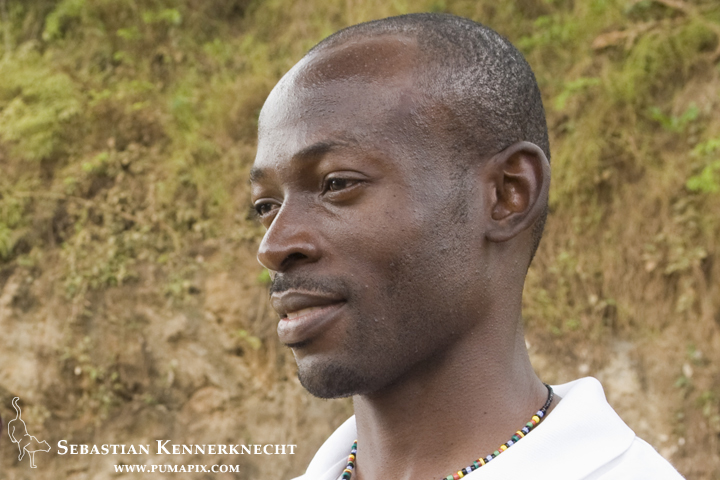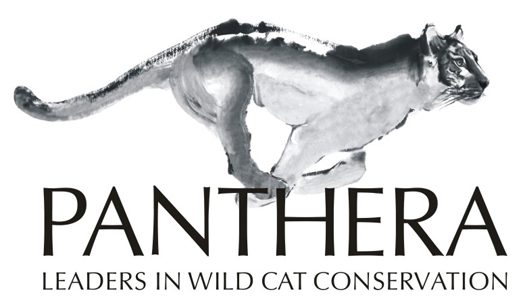As a follow up post to the Reviewing the 2013 Photographic Year post, I’d like to dedicate this post to the people and organizations who made it possible for 2013 to be such a great year.
People
The first adventure was a six week trip to Borneo to photograph the wild cats found on the island. Enter Mr. Bornean Wildcats, Andrew Hearn, who has been studying these animals for seven years and is the leading expert on Sunda Clouded Leopards and the Borneo Bay Cat. He is currently conducting his field research for his PhD there, studying multiple aspects of the ecology of the felids including population size, density, habitat preference, habitat use,prey base, among many many others!
The Marbled Cat, Sunda Clouded Leopard, and Bay Cat picture are only possible because of him. Thank you Andy, I am honored to not only know you, but call you a friend.

Bornean Clouded Leopard (Neofelis diardi borneensis) researcher Andrew Hearn radio tracking in secondary lowland rainforest, Kinabatangan River, Sabah, Borneo, Malaysia
The same goes for Gilmoore Bolongon, who used to be Andy’s field assistant and is now doing his own masters research on Sunda Clouded Leopards. Thank you Gil for always being willing to help, including carrying gear, arranging logistics, and determining camera trap locations!

Bornean Clouded Leopard (Neofelis diardi borneensis) researcher Gilmoore Bolongon, Sabah, Borneo, Malaysia
Thank you to Nuh Engoh, Rizam Bakiri, and Hildey Baas for helping with carrying equipment, giving me rides, and just being nice guys!

Bornean Clouded Leopard (Neofelis diardi borneensis) researchers Nuh Engoh, Rizam Bakiri, and Hildey Baas making food at campsite, Tawau Hills Park, Sabah, Borneo, Malaysia
Also a thank you to Roshan Guharajan who is a masters student at Michigan for being an extremely willing, patient, and generous boat driver and wildlife spotter!

Sun Bear (Helarctos malayanus) biologist Roshan Guharajan, Kinabatangan River, Sabah, Borneo, Malaysia
And to Iago Bonnici for helping take down cameras from the jungle, just because he could. Thank you!

Iago Bonnici is the second guy from the left, ignore the rest of the crazy people.
Next, came a four week trip to Lope National Park in Gabon where Laila Bahaa-el-din was concluding her PhD studies on African Golden Cats. She has been studying these animals for four years and too is the leading expert on the species. Her PhD will unearth many unknowns about this small felid including densities, habitat preference, diet, and their ecological relationship to the much larger African Leopards using the same areas. One of her PhD supervisors is Phillip Henschel who lives in Gabon and was nice enough to help me figure out where up and down is in the jungle. Not only does he feel truly at home in the tropical rainforests of central Africa, he is also an expert on African Leopards and conducting surveys for Lions across all of Africa. Both of them are amazing biologists, know their way around the forest, and most importantly to me, are truly generous, nice, and caring people. The African Leopard pictures only exist because of them. Thank you two for everything, it was a true honor!

African Golden Cat (Profelis aurata aurata) biologist Laila Bahaa-el-din reviewing camera trap images on computer, Lope National Park, Gabon

African Leopard (Panthera pardus pardus) biologist Phillip Henschel armed with camera, Lope National Park, Gabon
Additional thanks to Laila’s field assistant Arthur for being patient with pictures and making sure Elephants were not going to trample us in the forest:

African Golden Cat (Profelis aurata aurata) biologist Arthur Dibambo, Lope National Park, Gabon
Thank you to Ulrich Bogendre and the field assistants at Lope National Park who are extremely friendly people and know their way around the forest:

Botanist Ulrich Bogendre and field assistants looking at trees in lowland rainforest for carbon study, Lope National Park, Gabon
Théophile Desarmeaux for being an impromptu french translator and helping clean my camera trap gear. Thank you buddy!

Théophile Desarmeaux looking bada** at roadblock for illegal wildlife, Lope National Park, Gabon
And last, but not least, to Vianet Mihindou for helping with all the logistics at the ANPN field center. Thank you for making it such a smooth ride!

Vianet Mihindou, Lope National Park, Gabon
Organizations
I would like extend my deepest gratitude towards the world’s leading wild cat conservation organization, Panthera, which does absolutely tremendous field and conservation work world wide not only for the Big Cats, but also many of the small felids. Working with them has been a true dream come true and their goals are ones to which I am honored to make small contributions. Their staff is not only professional, but also extremely personable, and they have amazing attitudes towards making conservation change possible. Keep up doing what you are doing and I am looking forward to working with you again! If you have any interest in helping cat conservation, please donate to them. 100% of your donation will go directly into the field!
















